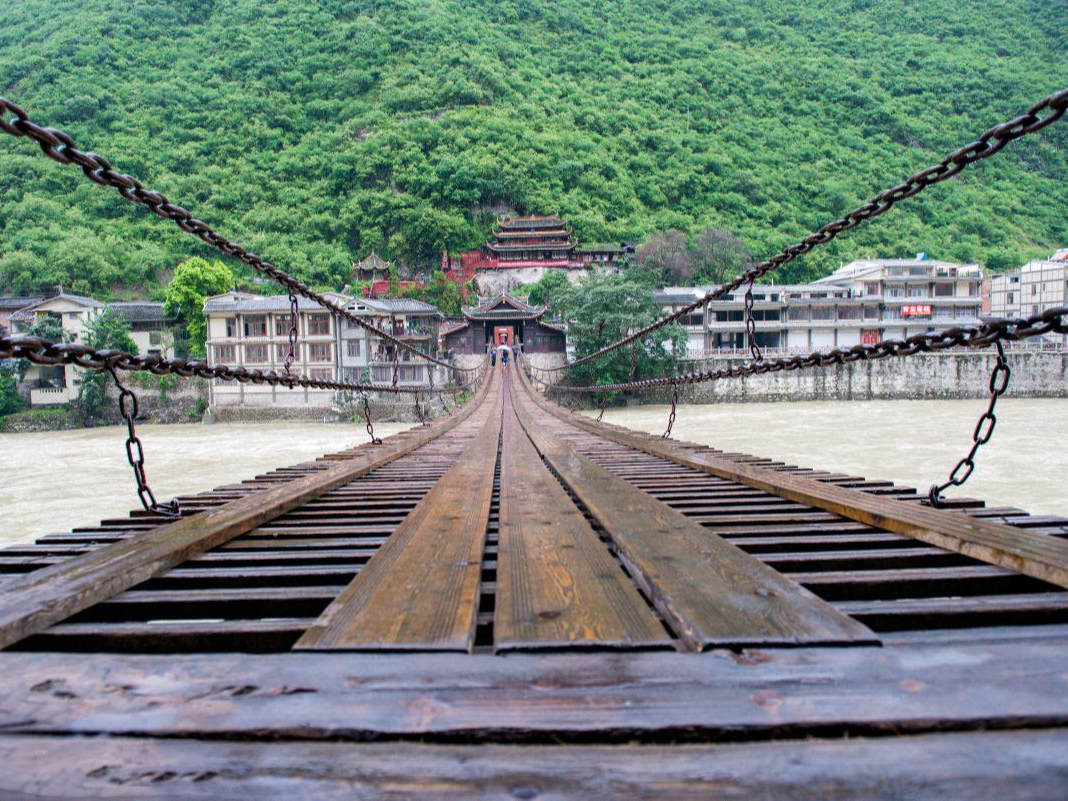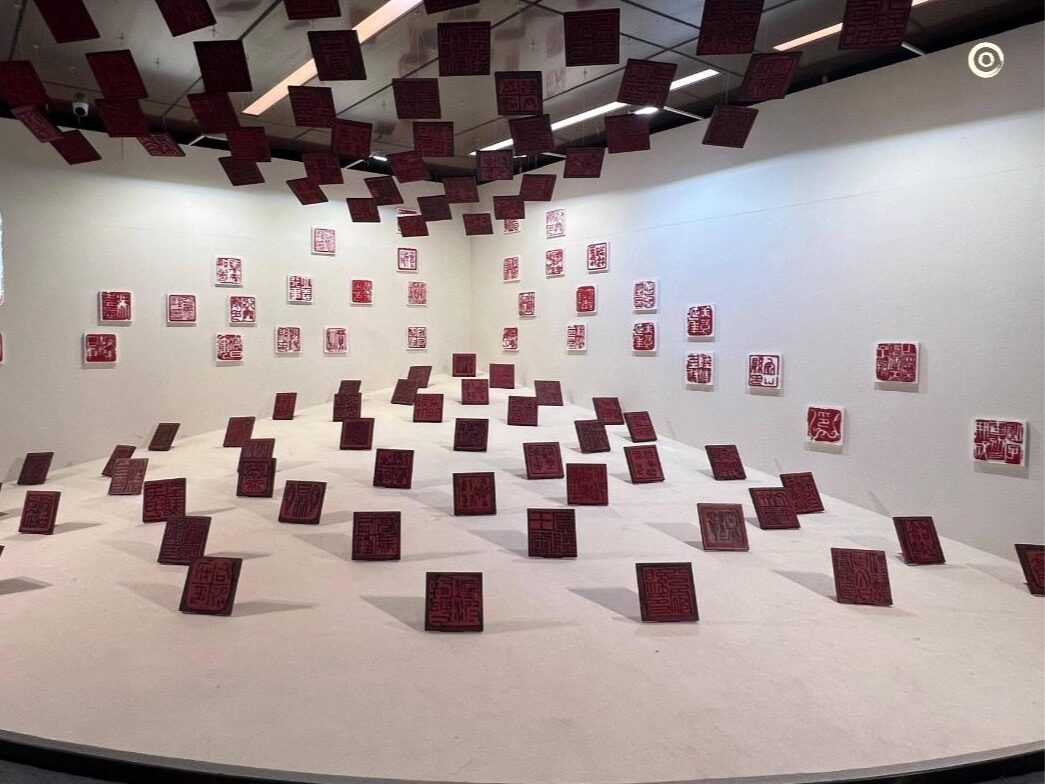- Luding Bridge, with a total length of 103 meters and a width of 3 meters, is fixed by 13 iron chains

Luding Bridge, also known as Tiesuo Bridge, is located above the Dadu River in Luding County, Sichuan Province.
The Luding Bridge was built in the forty-sixth year of Kangxi in the Qing Dynasty (1706). It is 103 meters in length, 3 meters in width, and 13 iron chains are fixed. There are 12,164 iron rings in total and a weight of more than 40 tons. It is an outstanding work of ancient bridge construction and the first batch of key cultural relics protection units in China.
The water of the Dadu River is fast and the surroundings are relatively steep. For such a form, how did the ancient people put up the Luding bridge?

The Luding Bridge is a legendary bridge in Sichuan, China. On the Dadu River, the brave Red Army paid blood and sacrifices to win the battle of "Flying over the Luding Bridge", laying the foundation for the development of the Red Army. Luding Bridge is a bridge of natural dangers. It is a chain bridge across the Dadu River in Luqiao Town, Luding County, Sichuan Province, connecting Sichuan and Tibet.
Luding Bridge
The main body of the Luding Bridge is entirely structured with iron chains, straddling the mountains on both sides of the bank. Moreover, in ancient times, without modern industrial machinery and equipment, the ability to build the Luding Bridge completely relied on the wisdom, diligence and bravery of the ancients. The Luding Bridge itself is connected by 13 iron chains. Thirteen iron chains connect 12164 iron rings. In addition, the bridge approach and piers on both sides of the bank are about 40 tons. At that time, in order to build this incredible chain bridge, many craftsmen gathered together to discuss how to build it. In the end they decided to connect the two sides with ropes first. Then put each bamboo tube on the rope. Then put the prepared iron ring into the bamboo tube little by little. Then the person on the opposite side pulled the rope to move the chain to the other side little by little.
The wisdom of the ancients is infinite. They got enlightenment from the people in the mountains who used the zipline to cross the river, and finally solved the problem with the solution of Suodu. First, tie the thick bamboo ropes to the east and west banks of the Dadu River, put more than 10 short bamboo tubes with long ropes on the bamboo ropes, fix the iron ring in the bamboo tubes, and arrange several strong men to pull on the opposite side. With the long rope, the iron ring slowly slid to the opposite bank along with the bamboo tube. After the iron cable is tightened, fix it on the ground dragon pile, and finally press enough weight on the ground dragon pile, and an iron chain is completed.

More than 300 years have passed, and the Luding Bridge, which has experienced wind and rain, still stands upright, and continues to play a role in communicating with Tibetans and Han and benefiting the people. Editor/He Yuting
Comment
 Praise
Praise
 Collect
Collect
 Comment
Comment
 Search
Search














Write something~